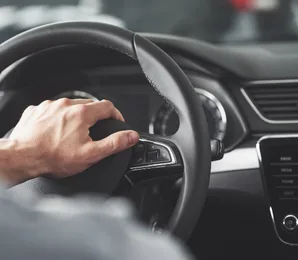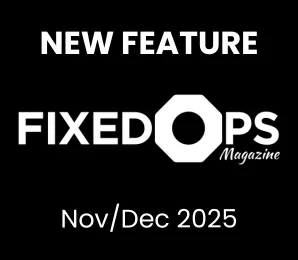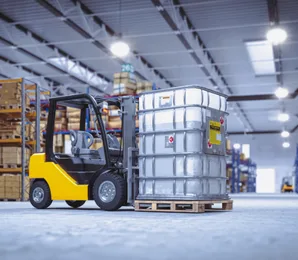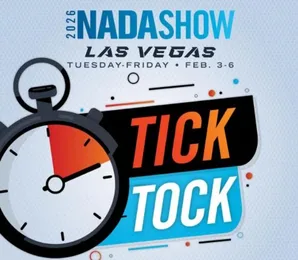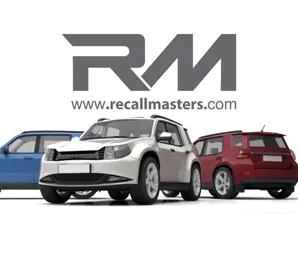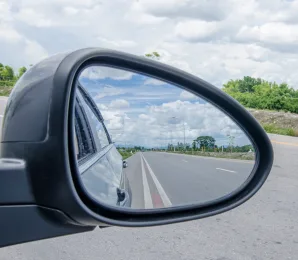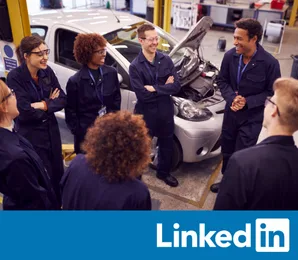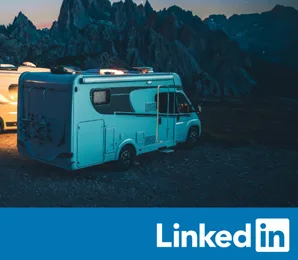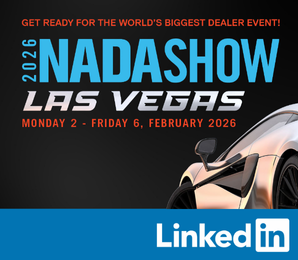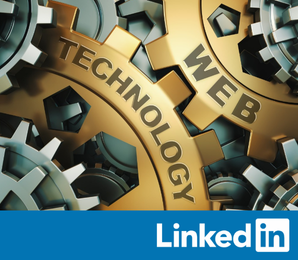Hulk Hogan’s Branding & Marketing Success
Lessons from a Wrestling Legend
An Unlikely Branding Guru
What can an ’80s pro wrestling superstar teach automotive dealers about branding? As it turns out, plenty. Wrestling legend Hulk Hogan (born Terry Bollea) built one of the most recognizable personal brands in entertainment, a masterclass in character branding and marketing that transcended his industry. Hogan’s larger than life persona, nicknamed “The Hulkster,” was more than just a gimmick; it became a cultural phenomenon known as Hulkamania. By committing fully to his brand identity and engaging fans with a clear, bold story, Hogan demonstrated branding principles that any business or individual can learn from. In this article, we’ll explore how Hulk Hogan crafted and grew his personal brand and highlight lessons automotive dealers and industry vendors can apply to build their own company or personal brands.
Embracing a Powerful Persona and Story
From the start, Hulk Hogan embraced a powerful persona and narrative that set him apart. He wasn’t just selling wrestling matches; he was selling a story of heroism. Hogan owned a single story relentlessly: the classic battle of good triumphing over evil. With his red and yellow attire, megawatt charisma, and signature catchphrases (“Train, say your prayers, and eat your vitamins!”), Hogan positioned himself as the ultimate good guy fighting villainous foes. This simple yet strong narrative resonated with millions of fans (dubbed “Hulkamaniacs”) on an emotional level. As branding consultant Jay Mandel noted, “Hogan demonstrated how to build an iconic brand by relentlessly owning a single story ‘good triumphs over evil’ delivered with coherence on every platform”. In other words, every aspect of Hogan’s character, from his interviews to his in-ring antics reinforced the same core message.
Consistency was key. Hogan committed to an exaggerated, larger than life persona and stayed true to it across all channels. “He was more than a wrestler; he was a masterclass in character branding,” explained PR executive Taylor Ketchum. “He fully adopted an over-the-top, recognizable personality and stuck with it through various platforms long before terms like omnichannel marketing were popular”. From his appearance, tone, and catchphrases to his poses and even his walk, everything about Hulk Hogan was carefully crafted and consistent, creating an iconic image. For automotive business leaders, the takeaway is clear: define your brand’s personality and narrative, then live it consistently. Whether you’re the face of a dealership or promoting a vendor service, establish a clear story (e.g. family friendly service, community hero, industry innovator) and make sure every customer touchpoint echoes that story. Consistent branding builds recognition and trust.
Creating Emotional Connection and Trust
Hogan’s brand went beyond colors and slogans created an emotional connection with his audience. He exuded confidence and positivity, embodying values like courage and loyalty, which inspired almost “religious” devotion from fans. This illustrates how confidence and authenticity in your brand voice can rally a passionate following. From a leadership perspective, Hogan showed that bold messaging and a clear mission can generate deep loyalty. Fans felt like they were part of Hulkamania; a movement bigger than just wrestling. Automotive brands can similarly cultivate community loyalty by standing for something meaningful. For example, a dealership might champion customer service as its “cause,” or a parts supplier might become known as the honest, reliable partner to depend on. When people emotionally identify with your brand’s values, they stick with you.
At the same time, Hogan’s journey highlights a cautionary lesson: authenticity matters. The alignment of personal integrity with brand image is crucial. Hogan’s overconfident showmanship was a double-edged sword. It built his legend, but any mismatch between the man and the persona risked backlash. As the Forbes analysis noted, if the brand and the person fall out of sync behind the scenes, reputational problems can arise. In Hogan’s case, later scandals in his personal life tarnished his hero image, proving that “you control your narrative until your life no longer supports it”. The lesson for professionals is to keep your brand promises honest. Auto dealers, for instance, must ensure that the customer experience they brag about in ads is truly delivered on the showroom floor. Trust is the foundation of any brand; once broken, it’s hard to regain. So, be flamboyant and confident like the Hulkster if it fits your style, but always back it up with integrity in practice.
Expanding the Brand: Merchandise and Media Empire
One of Hulk Hogan’s greatest marketing successes was turning himself into a one man merchandising empire. Before Hogan’s rise in the 1980s, pro wrestling rarely sold branded merchandise, fans might get a simple autographed photo at best. Hulkamania changed that forever. Hogan’s immense popularity created demand for T shirts, bandanas, posters, action figures, you name it. Sensing an opportunity, WWF (now WWE) and Hogan quickly embraced branded merchandise, churning out apparel, toys, lunchboxes, even ice cream bars emblazoned with Hogan’s likeness and catchphrases. Suddenly, fans could literally wear the brand, turning Hogan into a walking (and profitable) billboard. This merchandising boom, catalyzed by Hogan’s persona, not only generated millions in revenue but also cemented fan loyalty. It made supporters feel like part of the Hulk Hogan story every time they wore his gear.
The result? Hogan became “the most important figure in the history of pro wrestling,” an integral reason WWE grew into a global entertainment giant valued at roughly $9 billion by 2023. In business terms, Hogan’s personal brand added massive enterprise value, a testament to branding power. Automotive businesses can take note: brand extensions and promotional products can amplify your reach. Dealerships, for example, can create branded swag (caps, shirts, decals) for loyal customers, turning them into brand ambassadors around town. Vendors can publish content or guides that carry their branding, expanding their influence. When your audience proudly sports your logo or shares your message, your brand becomes ubiquitous. Hogan showed that if people love your brand, they’ll happily advertise it for you and even pay for the privilege!
Moreover, Hogan proved savvy in diversifying his brand presence across media. He didn’t just stay in the wrestling ring; he ventured into movies, TV, and more. Early on, he gained nationwide fame with a cameo as “Thunderlips” in Rocky III, then starred in films and a Saturday morning cartoon. He was everywhere: from video games to commercials. Hogan rarely said no to a licensing deal. He put his name on vitamins, a chain of pasta restaurants, a home workout set, and later even a reality TV show (Hogan Knows Best), a beach shop, a bar, a prowrestling league for celebrities, and a personal beer brand. In essence, he turned his persona into a fully-fledged enterprise, monetizing his brand in every conceivable way. As one observer noted, Hogan was doing the “personal brand as business” playbook long before modern athletes like Dwayne “The Rock” Johnson or Conor McGregor, he demonstrated that an individual persona could transcend sport and function as an entire enterprise.
For those of us in the automotive world, Hogan’s approach underlines the value of omnichannel marketing and brand extensions. Ask yourself: are you making the most of your brand’s potential? A charismatic dealership owner might host a local radio show or podcast about cars, becoming a local celebrity who draws customers. A savvy parts manufacturer might license their brand to a line of merchandise or sponsor community events, gaining exposure beyond the usual ads. The more places your brand can connect with people (provided it’s relevant and authentic), the more robust and far-reaching your brand becomes. Just as Hogan’s fame opened new revenue streams, your brand’s goodwill can create opportunities from cobranding deals to spinoff services that elevate your business above competitors. Don’t be afraid to expand your brand’s footprint.
Adapting and Reinventing to Stay Relevant
Even the strongest brands must adapt over time. Hulk Hogan’s career is a case study in strategic reinvention. By the mid1990s, Hogan’s all American hero shtick was growing stale with some fans. Sensing the need for change, he made a shocking pivot in 1996: Hogan “turned heel,” reinventing himself as a villainous character named “Hollywood Hogan.” Trading his famous red and yellow for black and white attire, Hogan joined the bad guy faction NWO (New World Order) and suddenly became the most despised antagonist in wrestling. This bold rebrand electrified the industry fans were stunned, but they couldn’t look away. The excitement around his new persona was so huge that it catapulted World Championship Wrestling (WCW), the rival organization he’d joined, *ahead of WWF/WWE in TV ratings, revenue and pop culture “cool factor,” albeit temporarily. In other words, Hogan’s risky makeover paid off by making his character relevant to a new era and audience.
This teaches a crucial lesson: don’t be afraid to evolve your brand when the time is right. A calculated brand refresh or repositioning can extend your relevance and appeal, especially if your current image is losing impact. In the automotive space, perhaps your dealership’s traditional marketing isn’t attracting younger buyers; it might be time to reinvent your branding (for example, adopting a more digital savvy, edgy style or highlighting new values like sustainability or tech innovation). Of course, reinvention must be strategic and authentic. Hogan’s change worked because it still fit within the larger-than-life world of pro wrestling and was executed boldly. As Jay Mandel noted, “His 1996 reinvention as ‘Hollywood Hogan’ was a brilliant, risky move that extended his relevance”. If you choose to pivot your brand, commit to it fully and make sure it aligns with a genuine strategy for reaching your audience. Half-hearted or gimmicky changes won’t fool anyone.
It’s also important to recognize the limits and risks of reinvention. Hogan’s villain era revitalized his brand for a time, but it also alienated some old fans and, later on, real life controversies damaged his image. The final takeaway is that a brand must continue to evolve with integrity. As Mandel emphasized, “No matter how big your brand is, if it stops evolving with integrity, it stops mattering”. In practice, this means always reading the room and adapting; but do so in a way that stays true to your core values. Change for the sake of change can backfire but change for the sake of staying relevant to your customers while upholding your principles is smart marketing. Just as cars require tune-ups and new models to stay competitive, your branding may need updates to meet the moment.
Being Bold, Memorable, and Customer Centric
Why did Hulk Hogan’s brand endure for decades? Because it was memorable. Hogan understood that in entertainment, as in business playing it is safe often means being forgotten. He built a character so bold and distinct that it demanded attention. “Hogan constructed a character so clear and exaggerated that it became iconic. The look, the voice, the energy… it wasn’t subtle, and that’s what made it memorable,” observes Sara Celotto, CEO of Vision Catalyst. In contrast, Celotto says, “too many brands opt for the safe route. Leaders willing to be bold, specific, and consistent in how they present themselves are far more likely to be remembered”. This is a direct challenge to businesses: dare to stand out. In a crowded automotive marketplace, a dealership with a unique brand personality (say, a quirky theme, an outspoken spokesperson, or an exceptional customer appreciation program) will stick in customers’ minds longer than one that looks and sounds like every other lot on the block. Similarly, a vendor with a strong, differentiated message (for example, being the data driven analytics provider who speaks frankly and insightfully) will attract more interest than a generic pitch. Don’t shy away from showcasing what makes you embrace it differently and amplify it.
Being bold doesn’t mean ignoring your customers’ needs in fact, it means connecting with them in a memorable way. Hogan always acknowledged his fans (calling them “brother” and pumping them up before and after matches), making them feel appreciated and part of the spectacle. Likewise, put your customers at the heart of your brand story. Highlight their successes, listen to their feedback, and engage them in exciting ways. You might host community events, share customer testimonials, or start fun traditions (imagine a dealership doing a celebratory bell ring or photo with every new car buyer). These human touches, tied into your brand persona, create emotional moments that people remember and talk about. In short, be bold and be customer centric that combination is branding gold.
Building Your Own Legendary Brand
Hulk Hogan’s branding success offers actionable lessons for anyone looking to build a strong personnel or company brand. Whether you’re running an auto dealership, selling aftermarket parts, or promoting any business, here are key takeaways inspired by the Hulkster’s journey:
- Own Your Story and Message: Define a clear, compelling narrative for your brand and stick to it. Hogan’s mantra of “good vs. evil” gave fans a storyline to believe in. Identify what story your brand tells (e.g. “customer comes first,” “community driven service” or “innovation wins”) and weave it through all your marketing. A unified message makes your brand unforgettable.
- Be Consistent Across Every Platform: From Hogan’s bandana and mustache to his catchphrases, every element was consistent and on brand. Ensure your branding (logo, tone, customer experience) is cohesive whether a customer sees an online ad, visits your showroom, or meets you at a trade show. Consistency builds trust and recognition.
- Create an Emotional Connection: Hulk Hogan built a fan community (Hulkamaniacs) that felt personally invested in him. Forge a connection with your audience by sharing your passion and values. Whether it’s a heartfelt mission statement or engaging social media content, let people feel who you are, not just what you sell. Emotional loyalty is powerful as Hogan proved by turning fans into fervent believers.
- Expand Your Brand’s Presence: Think beyond your core product or service. Hogan didn’t just wrestle he became a merchandiser, an actor, a reality star, and more, which massively grew his reach. Explore appropriate extensions for your brand: perhaps branded gear, educational content, or partnerships that put your name in new areas. Meet your customers where they are in person, online, and in their everyday lives.
- Be Bold and Memorable: In branding, boring is risky. Hogan’s outrageous persona made him a household name by being anything but bland. Dare to differentiate your dealership or product with a unique style or bold ideas. Stand for something, take creative risks in your marketing, and don’t be afraid to show some personality. Memorable brands attract attention and stick in customers’ minds.
- Reinvent When Necessary (but Stay Authentic): Monitor your brand’s relevance. If the market changes or your story gets stale, be willing to adapt. Hogan’s midcareer reinvention as a villain was risky but reinvigorated his brand. Likewise, a dealership might rebrand to embrace online sales, or a business might pivot to new tech evolution can extend your success. Just ensure any reinvention aligns with your core values and is transparently communicated, so it comes off as authentic growth, not a betrayal of trust.
- Maintain Integrity and Trust: Finally, remember that your reputation is your brand’s bedrock. Hogan’s legacy, despite some controversies, shows that a brand can endure if it’s built on genuine connection but even a legend isn’t immune to backlash when personal actions undermine the brand’s image. For you, this means keeping your promises to customers, treating people right, and aligning what you say in your marketing with what you do in reality. Integrity creates loyalty, and loyalty is the ultimate win in business.
Channeling “Hulkamania” Into Your Brand
Hulk Hogan’s branding and marketing success was no accident it was the result of visionary persona building, savvy marketing moves, and an instinct for connecting with people. He turned himself into a larger-than-life figure who not only sold tickets in the arena but also sold an idea and feeling to his audience. From Hogan, we learn that branding is far more than a logo or tagline; it’s about creating an identity and experience that people remember and rally behind. He pioneered a commercial model that many athletes and entertainers have followed, proving that a strong personal brand can transcend its origins and drive enormous business value. As professionals in the automotive industry, you can apply these same principles.
Take a page from the Hulkster’s playbook to be passionate, be consistent, be innovative, and above all, be customer focused. Whether you’re building your personal reputation in the dealership or crafting a national marketing campaign, the goal is to create your own version of “Hulkamania” a brand so strong and distinct that it becomes legendary in your market. As Hogan himself might put it, “Whatcha gonna do when your brand runs wild on you?!” Now is the time to drop the leg (figuratively, of course) on mediocre branding and start building an iconic brand of your own, brother!
Like what you’re reading?
If you’d like to explore how content writing, blogging and articles can boost your dealership’s online presence or want more information, schedule a quick call with Peter “webdoc” Martin.
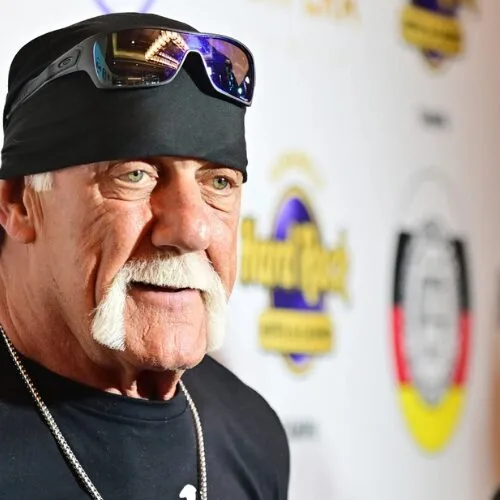
LinkedIn Article Written by Mr Peter “webdoc” Martin
Request a call with the webdoc
Share or Print
Share or Print this Article
Please Note: Cactus Sky provides marketing services tailored for vendors attending the NADA Convention,
but is not affiliated with or endorsed by the National Automobile Dealers Association.
NADA® is a registered trademark.




